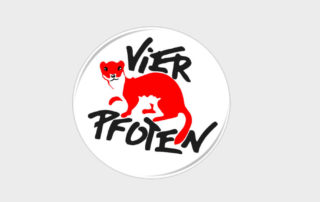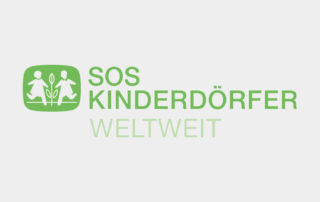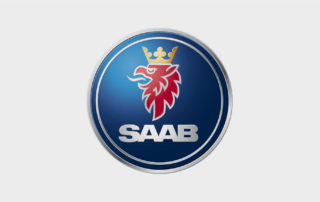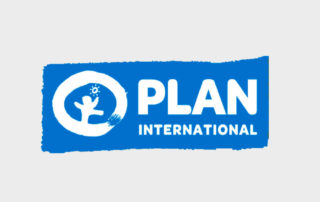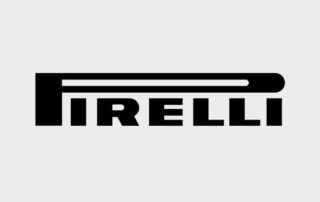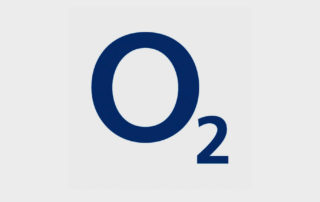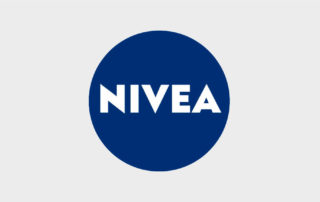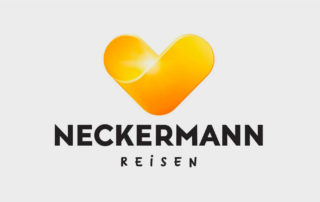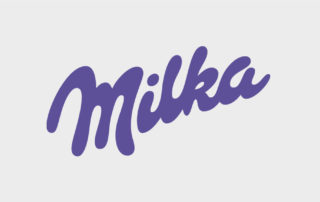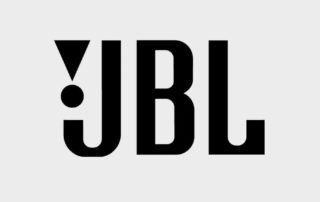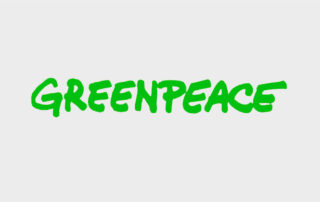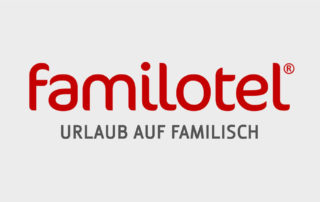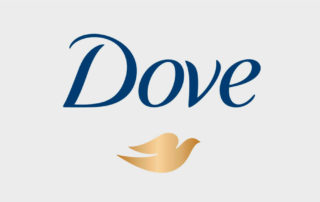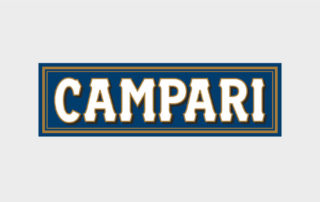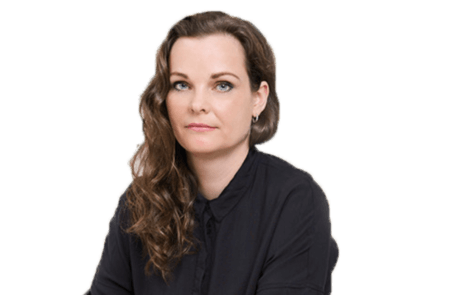Glossar
We have briefly explained and summarized the most important terms that come up again and again in online marketing. Even professionals can still learn something.
Using two identical versions of a web page or emailing before the actual A/B or multivariate test. The A/A test practically serves as a control instance to avoid statistical deviations in advance.
A/B testing is a common online marketing testing method that compares 2 different variables of a website, newsletter or banner . However, the 2 variants may only differ in one point to ensure comparability. This test is mainly used to test the usability of the product and optimize the conversion rate.
This is a business analysis method in which customers are divided into categories A (very important), B (important) and C (less important) on the basis of their importance to the company.
Is the top area of a website that is visible when the page is opened, without the need for scrolling. It is important that this content is visible, as it is usually the first thing that visitors to a website see.
Access providers or service providers are so-called access providers who provide access to the Internet with the aid of software.
This is a user account that is required for restricted systems in order to access all content.
Depicts the growth in the number of people estimated to remember ads during a campaign.
Ad Click is the abbreviation for Advertisement-Click. An ad click occurs when a specific advertising medium, such as an advertising banner or button, is clicked on online and the Internet user is thus taken directly to an advertiser’s information via a hyperlink. The ad click rate or click-through rate (CTR) indicates the number of Internet users who ultimately clicked on the online advertising medium.
The network connects the advertiser with the publisher.
An ad server is a server through which online advertising media can be delivered and measured using software. This enables advertisers to measure, monitor and evaluate key metrics such as click-through rate (CTR), ad impressions, ad visibility and ad clicks.
The term stands for “Advertising Technology” and refers to various types of analytics and digital tools used in connection with advertising.
Ad visibility is the visibility rate of an ad in relation to the total impressions within a display campaign. The invisible area is called below the fold and the visible area above the fold.
Visibility is very important and indicates whether a user had the opportunity to actually see the ad.
Adaptive web design tries to adapt the customized design of a website to different devices via breakpoints. The different devices can be recognized by the different resolutions, browser agents, etc..
These are filter programs or add-ons that block advertising on websites.
Adding someone adds a person as a new contact in the social networks. This function can also be used in instant messaging services.
Is a method of advertising in which the customer is addressed in the form of an editorial article in a newspaper.
AdWords is a Google advertising program that was introduced in 2000. AdWords supports advertisers in search engine marketing. Google offers on the one hand the possibility to place text ads in the search results to refer to the website. These can be recognized by the “Display” label and the yellow background. On the other hand, advertising can also be placed on the Google search results pages.
Affiliate marketing is a sub-discipline of online marketing in which sellers (merchants) and website operators (publishers) work together on a commission basis.
In doing so, the website operator provides the seller with advertising opportunities on its pages. The website operator receives a commission that depends on various criteria such as advertising period, click, per thousand ad impressions, order received or contact won.
Artificial intelligence (AI)” is a branch of computer science that deals with reproducing aspects of human thought and action with computers.
The alt tag is used by search engines if images or graphics cannot be displayed. The stored alternative text contains a short description of the image that is not loaded. It belongs to the meta data and is not visible to users.
The abbreviation stands for “alternative text”. These texts describe images and buttons. They are not visible on the homepage itself. They are located in the HTML codes. Alt texts fall into the category of image SEO and thus belong to OnPage optimization.
Anchor text, which translates as anchor text, link text, or reference text, refers to the clickable text of a hyperlink on an Internet page. By clicking on the anchor text of the hyperlink, you will be redirected to the target page.
This term refers to an interface between two programs, between a program and the operating system, or an interface between two operating systems. The task of the interface is to establish a communication of two program systems on source code level or to simplify it.
Means setting up an archive for a company’s social media posts, messages and related metadata.
ASO optimizes app marketing and ensures that the app or widget is as well known as possible among users, thus increasing the number of downloads and generating revenue.
Atlas is an ad server from Facebook and currently acts as a tracking tool. Tracking is not based on cookies, but on the Facebook ID. This makes it possible to track the customer journey across all devices.
When actions and behaviors are attributed to certain causes, this is called “attribution” in psychology. Applied to marketing, the term means identifying touchpoints on a specific customer that the customer was exposed to before making a purchase.
Attribution models are about the evaluation of advertising contacts depending on the temporal sequence. A distinction must be made between the following attribution models:
[/fusion_text]
| Last Click/View Attribution | Only the last contact before the conversion is evaluated |
| First Click/View Attribution | Only the triggering (first) contact is evaluated |
| Bathtubs Attribution | The triggering and last contact is evaluated |
| Ascending or descending attribution | The closer the contact to conversion, the higher the rating |
| Linear attribution | All contacts have the same value |
AR uses computer-generated effects to augment reality. Frequent examples of this are face filters in social media apps.
An avatar is a visual representation of the user in a digital context. These are usually computer-generated images such as Bitmojis. On social media, this also refers to the profile picture that the user uses on the platform.
In the context of social media engagement, awareness refers to the awareness of a brand, company or product among potential customers on the Internet. Increasing awareness is often an intermediate goal in order to ultimately achieve an actual increase in sales.
Means “business-to-business marketing.” These are marketing activities aimed at business customers.
The relationships in business transactions between entrepreneurs and individual consumers in the field of marketing are represented by “business-to-consumer marketing”.
The back-end serves, for example, as the administration area of web pages. Menus, templates and navigation structures can be defined, modified and managed here. The back-end is visible only to the responsible persons/administrators and not to the website visitors themselves.
Backlinks refer to links/hyperlinks from another site to your own domain and are an important part of off-page search engine optimization. On the one hand, backlinks serve as an important source of traffic and on the other hand as an important ranking criterion for search engines. Ideally, backlinks should grow organically or be built through collaborations with other websites. Purchased links, on the other hand, are not recommended and are usually penalized by search engines like Google.
Banner also called online banner, advertising banner or internet banner is the advertising space on an online advertising medium. A distinction can be made between static, animated and interactive banners.
HTML5 banners have now completely overtaken the Flash ads that dominated for years and are the latest standard in the animated/interactive ad banner space. Among the best known advertising banners are the so-called IAB standard formats of the Universal Ad Package (UAP) and consist of:
Medium Rectangle: 300×250, Wide Skyscraper: 160×600 and Leaderboard/Superbanner: 728×90
Behavioral targeting refers to the targeted playout of advertising, which is made possible by analyzing the surfing behavior of an online user. Through the use of cookies, different user interests can be categorized and analyzed.
If, for example, a user is interested in a vacation in Austria and surfs to family sites at a later time, this results in a user profile and the chance of generating interest in an offer with targeted advertising on the topic of “family vacations in Austria” is relatively high.
This refers to the yardstick that makes it possible to compare a specific, expected result against a predefined value. Especially in search engine optimization benchmarks play a role.
Bid management tools are used to automatically optimize Google Ads campaigns.
Consists of structured and unstructured data that is often difficult to process due to its size and complexity. Data can come from a variety of sources, including social media platforms, smartphones, sensors, IoT devices, and more.
Bing Ads is an advertising program from Microsoft and is the counterpart to Google AdWords. This is a Pay Per Click (PPC) advertising system that is used in both the Bing and Yahoo! search engines.
Bitly links are shortened URLs that lead to self-selected websites.
Black hat SEO is an attempt to find loopholes in search engine algorithms in order to rank a website higher in the search results list.
A blacklist is used to create a list of websites that the advertiser wants to exclude from advertising playout from the outset.
This is a collection of links to other blogs, usually stored in a sidebar.
Bookmarks are bookmarks on the Internet that help you find websites more quickly. A bookmarking service is a service that enables users to store bookmarks on the Internet and share them with other users.
Boosting a post means that a post is promoted. By paying, you can generate more reach for a post, address a new target group or lead more users to the website.
In online marketing, the “bounce rate” is a key figure that describes how many users click on a search result and then leave the domain without taking any further action.
Describes the extent to which users remember or recognize a brand and shortlist it in their purchase intentions.
The term refers to the confrontation with brand bidders in order to claim assigned keywords for one’s own company. This allows you to protect your own brand. The focus is on increasing traffic and the conversion rate.
Brand management” describes the strategic organization of a brand and related products in the respective market. This involves the advantageous introduction, positioning and long-term set-up of these.
The technology used for this ensures that the advertising is not broadcast on websites that could have a negative impact on the brand.
With a breakpoint (also called “breaking point”), exact pixel values are marked to change the layout of a web page in Responsive Web Design. For example, individual page elements can jump to a different position. This happens especially with different sizes of a browser window.
These are 6-second video ads or sponsorship video ads that are played before or after video content on YouTube.
The term comes from business informatics and describes a technology-driven process in a company. This includes data analysis, data preparation, data mining and data management.
This is a form of marketing based on recommendations from consumers in the online sector.
Buzzwords are keywords used on the Internet that appear exceptionally frequently in Internet communication over a certain period of time.
Calls to action are referred to as “call-to-actions.” In online marketing, it is often used in the form of a button or link where Internet users can be actively prompted to take an action.
is a graphic design platform for the creation of visual content. The software works according to the drag-and-drop principle and contains templates that can be used by users.
Carousel ads contain a maximum of ten different images.
CSS is a computer language that defines how content or areas on a website should be displayed. It’s all about fonts, colors and shapes.
The click-through rate indicates the ratio between the number of clicks on an ad and the number of adimpressions as a percentage.
Clickbait” is web content with a misleading headline designed to entice the reader to click on the whole story. In most cases, however, his expectations with regard to content are disappointed.
In cloud computing, information technology functions are made accessible to a network with the help of the internet. Jointly rented servers form a cloud in which the data is managed. At the same time, access to outsourced data volumes, software or technology is made possible.
A comment is a form of engagement where a user reacts to a social media post.
The term describes a group of people who follow and/or regularly interact with a channel/page.
This refers to the interaction with the community, e.g. by replying to comments.
A connection is someone you are connected to on social media. LinkedIn uses the term “connection” specifically for professional social media relationships. The counterpart to this on Facebook are the “friends”.
The content of a web page, such as an image, text or movie, is called content.
In this integration of multimedia content, a company is provided with advertising space on Internet pages that are involved in the editorial content of the site. Content integration is one of the forms of advertising with great potential and is therefore often operated as part of an SEO measure.
Content marketing is a form of inbound marketing. The goal is to attract the potential target audience and draw their attention to your brand by creating valuable content such as whitepapers or explainer videos. Content marketing is not perceived as advertising and helps to increase awareness and enhance the image.
Contextual targeting is a method in which online advertising is placed depending on predefined keywords. The selection of suitable keywords is preferably based on relevant terms that are related to the advertised product or brand. Using various technologies, it is possible to check whether the defined keywords appear on the website and would serve the advertisement.
A conversion is classically the conversion of an advertising contact into a predefined action. Conversions can include:
- a purchase in an online store
- the download of a whitepaper
- the newsletter subscription
This aims to increase the number of conversions and thus also maximize the conversion rate.
The metric of conversion is the conversion rate. Conversion rate refers to the percentage of people who have taken a specific action on a website.
Example:
If 100 visitors to the online store result in an order, then the conversion rate is 1%.
Formula:
Conversion rate in percent = conversions / visits * 100
Allows to track and evaluate specific actions performed by users on a website.
This is a tracking method with which the surfing behavior of users on the Internet can be analyzed without the use of cookies. In contrast to classic client-side cookie tracking, data is collected and analyzed via the Internet server. This is also referred to as server-side tracking.
Stored data records of a website that are stored on the computer of an Internet user are called cookies.
With the help of cookies, it is possible to analyze how long a user has stayed on a website and which pages have been visited. This allows individual advertising offers tailored to the user to be placed on the network.
This is a payment model in which a campaign is billed according to the frequency of clicks on an advertising medium.
This is a payment model in which the advertiser only pays for a data set that is actually generated. Defined lead targetscan be very different, for example:
- the postal data set for sending a catalog
- the e-mail address for sending a newsletter
- the telephone number for call center acquisition
CPM refers to the advertising cost per thousand views.
In a CPO campaign, the advertiser pays only when a purchase occurs.
In this model, the marketer pays for each sighting that takes place. One consideration is a call to the advertising medium from a user on the publisher’s platform.
Is a term from the field of search engine optimization (SEO) and refers to the speed at which search engine crawlers or bots crawl and index a website.
This is a software-based search robot that independently searches content on the Internet and collects various data. These can then be indexed, analyzed, prepared and further processed.
In this form of marketing, brands partner with content creators to increase awareness and engagement for brands and campaigns. “Content creator” is a broad term that describes people who produce content, especially for social media. The term “creator” is not congruent with the term “influencer”. The latter can also create content, but have a stronger connection to (and influence over) their audience.
Refers to a company’s focus on the needs of its customers. It also includes the related activities of maintaining customer relationships with the aim of customer retention.
In cross-channel marketing, advertising messages are disseminated through various channels. The primary goal is to get the maximum conversions and gain synergy effects.
The customer journey is the path (the “journey”) of a customer up to the target action (e.g. purchase decision, order, inquiry). Until the customer has made the final purchase decision, he comes into contact several times with various touchpoints, such as a brand, a product, ads, online marketing measures, etc.
Refers to the value that individual customers have for companies during the period they are customers. Unlike other models, this value looks into the future and describes the expected revenues.
D2C refers to the direct sale of products and services by the manufacturer.
A dashboard makes it possible to manage various social media platforms and applications from a single screen.
Refers to an analysis of customer data used to improve sales and increase brand popularity and reach.
Refers to the automated transfer of structured information between a server and a client.
A DMP is a large database in which user data can be collected, evaluated and used to control/optimize online campaigns. Essentially, cookie IDs are used to define target group segments in the DMP and use them for real-time advertising (RTA). Measures prepared.
DM is a method that uses algorithms, AI and statistics to bundle large amounts of data and analyze it in a results-oriented manner.
A DPA governs the processor’s compliance with data protection laws.
Refers to a central database that stores, manages and retrieves large amounts of information from various sources.
The deep web is the part of the Internet that cannot be found using traditional search engines. It consists of topic-specific databases, password-protected forums, social networks and websites that are only generated dynamically from databases through queries.
A demand-side platform supports the automated purchase of online advertising space at predefined prices. In a real-timebidding process, a DSP makes it possible to access advertising inventory from various sources, such as sell-side platforms and ad networks.
In contrast to classic marketing, the (potential) customer of the advertiser is addressed directly and personally and a dialog, i.e. a response from the addressed customer, is expected.
Is a process of online marketing that aims to shape brand building and brand maintenance through digital communication, thus building long-term customer relationships.
The term refers to a person who has mastered the use of digital technologies without having consciously learned them.
Refers to the strategic planning of a company that focuses on the application of digital technologies. It is part of the overall business strategy.
It is a form of marketing through which the company personally addresses a specific group of customers or clients and expects a response.
A direct message is a private message that is sent via a social media platform. Normally, direct messages from non-followers are blocked or forwarded to a secondary inbox.
The disclaimer protects against false criticism as well as pornographic, racist or inhuman content that should not appear on a platform. Facebook allows you to block posts or comments that contain certain terms. A filter for vulgar expressions can also be set.
Display marketing is a sub-discipline of classic online advertising. The individual advertising insertion of a banner – also called impression – aims to achieve the greatest possible branding and awareness effects with the respective target group. The most proven form of billing is called CPM (cost-per-mille).
A link(backlink) to another website that has not been marked with a Nofollow attribute is called a Dofollow link.
This is especially relevant for search engine optimization, in order to increase the position in the ranking in this way.
The name of a website is called a domain. A complete domain consists of third-level domain (subdomain), second-level domain and top-level domain (TLD).
www. : Third-level domain (subdomain)
adpepper : Second-level domain
.de : Top-Level-Domain (TLD)
https://www.adpepper.com : URL
Double Click Bid Manager is Google’s demand-side platform that allows advertisers to buy ad inventory in real time. The DBM is not to be confused with Google DoubleClick the ad server of Google.
If a user has entered his e-mail address in a distribution list, this is a single opt-in registration. If the user then receives a confirmation e-mail and clicks on the confirmation link contained therein, a full permission to contact in the form of a double opt-in registration is present. This procedure increases the protection against unwanted spam e-mails.
The procedure describes the method to unsubscribe from newsletters or mailing lists. This takes place in two steps and is analogous to the so-called double opt-in.
Dropbox is part of the cloud and provides storage space on the network. Files, images and documents can be saved in folders that can be accessed from anywhere.
The average time a user spends on a website is called the dwell time or “average time on site.” It covers the period from calling up to leaving the page. Based on them, assumptions can be made about the users’ interest in the website and its content.
This is a feature in Google Ads that is used to dynamically generate and display search ads based on the content of a website.
E-book is short for “electronic book”. This is a digital file (such as a PDF or EPUB) that can be read on a computer, mobile device or special e-book reader.
Electronic commerce describes all trade on the Internet. The best-known form of e-commerce is online shopping, but there is much more to e-commerce than that. Marketing and sales on the Net, various online services, services, management and the handling of business processes are also sub-segments of e-commerce.
E-learning refers to learning supported by digital media. To this end, communities are usually set up online to provide learning materials.
is a person who uses the latest technical innovations earlier than the masses. It acts as a gatekeeper and opinion leader.
This allows you to show the effective cost of a click. Unlike CPC, eCPC is often used to estimate costs only after the advertising campaign has ended or during the campaign. It is mainly used for ad placements with Google AdWords or large advertising networks.
The effective eCPM or eTKP indicates the effective revenue per 1,000 impressions. The special feature of eCPM is that it can be applied even if different billing models (e.g. CPL, CPC, CPM) are used for campaigns.
eCPO means effective Cost per Order. The eCPO is equally the effective cost of an advertising format, only in this case it is calculated on the basis of responses (e.g. order, completed subscription).
For example, if the cost of a campaign is 2,000€ and 200 conversions were achieved, the eCPO is calculated as follows:
eCPO= 2000€ / 200 Conversions = 10€
With the help of e-mail marketing, customers and prospects can be targeted. It also serves as a valuable tool for attracting new customers and retaining existing ones. The numerous advantages of email marketing, such as low shipping costs, speedy delivery and a wide variety of design options, make this marketing tool an important part of online marketing.
Content that is integrated on a website by an external provider, such as YouTube, is called embedded content.
Describes advertising and communication measures in which emoji symbols are used. These are particularly suitable for communicating with younger target groups.
With emotional targeting, the target group is addressed via the recipient’s feelings. Advertisers use certain triggers to evoke a feeling in the user.
Engagement rate is an online marketing metric that is mainly used in social networks. The engagement rate represents how strongly the community interacts with a page’s content. This is measured in terms of likes, shares and comments. The higher the engagement rate, the more active the community.
Evergreen content refers to long-lasting content that is not only related to a specific event or campaign.
Eye tracking is mainly used in online marketing to test the usability of a website or an online campaign. This uses infrared technology to record a user’s eye movements in order to optimize certain areas.
F-Commerce stands for Facebook Commerce. Commerce (the buying or selling of products) on Facebook is referred to as f-commerce. The “Facebook Marketplace” sales platform recently introduced in Germany, on which any user can post and sell products, will presumably lead to further significant growth in F-Commerce over the next few years.
A favicon is a 16×16 or 32×32 pixel graphic that is displayed in the address bar, browser tab, and favorites to recognize a page.
The term “feed” refers to the content that you see first when you open social media. It usually displays the content of the users you follow – but also ads and suggestions.
Filters are photographic effects that can improve or at least change images in social media.
The findability of a website on the web is referred to as findability. With the help of SEO and SEA, this can be additionally optimized so that the website appears as high as possible in the search engine results.
These cookies are set by the website on which a user is currently surfing. They are not accessible by browsers across domains.
A pinned post is a social media post that is saved at the top of a page. Fixing a post is a good way of highlighting important content.
Fluid Layout translates: Fluid design patterns. Here, a width of a page layout is defined in percentages, and the height is defined in pixel values. The layout now adapts flexibly within a predefined minimum and maximum width.
Is an area at the bottom of a web page or document that can be used for additional information and navigation.
The frame of a document is called a frame. With the help of various programming commands, a web page can be divided into different sections.
To prevent Internet users from being confronted with the same advertising medium too often, frequency capping is used as a measure in online media planning. Supporting cookies are used, which can identify a user. This makes it possible to determine whether and how often a user has already visited a page. Online media planning thus has the information on how often an ad has already been displayed. Frequency capping can be used to specify the frequency of an insertion, e.g. max. five insertions per day.
The area visible to website visitors is called the front-end. In the front-end, the visitor can see and retrieve all the information of a page. In contrast, in the back-end, all the information of the website is managed and edited and is therefore not visible to the user.
It is a widely used network protocol that allows users to exchange files between a server and a client. Files can be transferred, received, renamed, deleted and organized.
This refers to those born between 1990 and 2010 who grew up with the Internet.
The term refers to AI models and algorithms that can generate new content or data similar to that with which they have been trained.
To determine the exact location of a user, the IP address, GPS data or already existing databases are used. This is mainly used in the case of location-based advertising and local services.
The term refers to the enhancement of a file with the geographical data of a photo or video.
The abbreviation for “Graphics Interchange Format”, a file format that supports both static and animated images.
Is an advertising program of the US company Google LLC and is one of the most popular systems for search engine advertising (SEA) worldwide.
Google Analytics is a tracking tool used to analyze website visitors. In this tool, information about a user (such as location, page views, source, and more) is displayed to the site operator.
Is a free tool from Google that allows webmasters to manage and implement tracking codes and other tags on their website.
A group is a public or private online community within a social network. Members can discuss relevant topics in a group. Both Facebook and LinkedIn offer groups on their platforms.
Guerrilla marketing focuses on unconventional and attention-grabbing marketing measures. A comparatively low budget is set, with which the most effective possible result is to be achieved.
The social media term “handle” refers to the name you give yourself and under which you can be found. In the case of Instagram and Twitter, it always begins with an @.
A Hangout is a video or voice call with one or more participants via the Google Hangout service.
If an email cannot be delivered, it is called a “hard bounce”.
Hashtags are often used in social networks. Individual keywords make it easier to search for more information about the term after the hashtag.
Header bidding belongs to the discipline of programmatic advertising. Publishers offer display space on various advertising marketplaces (ad exchanges). The highest bid wins. To implement header bidding, a Javascript code and an ad tag are installed in the header of a website. The ad tag identifies the highest bid of a buyer. This person then ultimately receives the advertising space, which is automatically played out by the ad server. The counterpart to header bidding is the waterfall principle, in which advertising spaces are issued according to priorities and direct sales.
Designates the image that appears at the top of a social media user’s profile. It gives companies the opportunity to showcase their products, teams or any other aspect of their business.
It is a visualization tool used to display large amounts of data and identify patterns and trends in the data.
The abbreviation HTML stands for “Hypertext Markup Language”. In the HTML document, contents of a web page can be clearly structured. The change from visual design (Flash) to code-based design (HTML5) first of all increases the technical, time and also personnel effort.
IAB stands for Interactive Advertising Bureau or Internet Advertising Bureau. The IAB standards are a standardized format for advertising media. These standards were introduced by the IAB in the USA and represent a so-called “Universal Ad Package”. This should serve to standardize online advertising. These standards specify, for example, uniform sizes, certain dimensions and formats.
With IGTV, vertical videos of up to 10 minutes in length can be posted and played. You can like and comment below the video.
The key figure indicates how often an ad or an advertised post is retrieved from the server and displayed in a social media network.
This refers to a form of marketing that aims to ensure that a customer searching for a product encounters and selects the product advertised by the company. The prerequisite for this is that the customer can also find the product. Search engine optimization is helpful for this.
Appearing in the hit list of a search engine is called index listing. Search engine optimization can achieve a high ranking of a website in the index of a search engine.
Influencer marketing is mainly used in the social media sector. Influencers are opinion leaders who have already achieved a certain level of recognition and can therefore demonstrate a correspondingly high reach. In most cases, a community of its own is formed, consisting of fans who actively follow the influencers’ news and information on a daily basis. Influencers exude a sense of trust and credibility for the community, which companies can benefit from to emphasize the meaningfulness of the brand message. Companies therefore often place their product with the support of influencers.
An inline frame is an HTML element that is placed as a frame within a web page. It is often used in the context of content and advertising from other providers. For example, YouTube videos can be included on a web page, which is called an iFrame.
Includes the collection of all interactions (likes, comments, clicks, shares) related to a post.
Interstitial is also known as interruptive advertising. This is a form of advertising that is displayed to the Internet user in various forms. It can appear in the current browser window or open in a new window. The advertisement is either automatically hidden after a certain time, or can be closed or skipped by the user. An interstitial can take different forms: Pop-up, Pop-under, Flash layer, Prestitial or Superstitial.
Advertising spaces that can be purchased by advertisers are called “Inventory”.
Every Internet-enabled computer, receives a globally valid address. This consists of a 32 bit number. A distinction is made between a static and a dynamic IP address. If an IP address is permanently assigned, it is a static IP address. If, in turn, new IP addresses are issued when a new connection to the Internet is made, this is called a dynamic IP address
Java is a programming language created by the company Sun. With the help of Java, special effects such as animated images or three-dimensional animations can be added to a web page. The main difference to Flash here is that Java is not limited to use on the Internet. To include the programming language in HTML documents the scripting language “Javascript” is used.
JPEG is the abbreviation for Joint Photographic Expert Group. This is a graphical file format used primarily for compressing photographic images. These image files can be recognized by the extensions .jpg, .jpeg, or .jpe.
In a conversion path, web pages are created in such a way that visitors must go through certain pages to direct them to the desired action. The page that is ultimately to be reached is also called the website goal, conversion goal or target page. Examples of conversion paths are newsletter orders or inquiries via web forms. If the conversion path is often abandoned or aborted, the reason for the high bounce rate must be analyzed and eliminated.
Key Performance Indicators are key performance indicators. These are important key figures that make the success of a campaign measurable. The open rate, conversion rate or click rate are example KPI’s in online marketing.
Keyword targeting distinguishes between targeting via search engines (SEA) and targeting on websites.
Keyword targeting via search engines (SEA):
As soon as the Internet user enters a search term in a general search engine, the matching advertisement is displayed. The so-called “keywords” (search words) are determined in advance. In the most popular search engine Google, keywords are recognized by the Google AdServer and matching AdWords ads are displayed that contain exactly this or similar keywords. The same is true for search engines elsewhere, such as Bing. However, Bing Ads are displayed here, which are the counterpart to AdWords ads on Google.
Keyword targeting on websites:
Here, ads are displayed according to the content of a web page. If a website is about home interior design, for example, suitable advertisements such as banner ads from furniture suppliers are delivered.
Keyword targeting advertising is an advanced form in which the website is promoted through paid search engine listings. As soon as the booked keyword is searched for by the user, the entry is displayed accordingly.
Once a banner or text link is clicked, the visitor lands on a web page called a landing page. The user should be redirected directly to the page where a desired action can be performed.
Are translated so-called “shift indicators”. The ad text is placed in front of the web page text, obscuring the actual content of the page.
The initial contact between potential new customers and a company is called a lead. This is supported by online marketing measures.
Lead generation is the successful generation of personal data from potential customers who are interested in a product or service. Internet users leave their personal data here to get more information. There are numerous ways to generate leads, the most popular of which include registering new customers and signing up for a newsletter.
Information is placed in relevant context so that the prospect is targeted at the right time in the buying process and at the appropriate stage of the buying decision. However, lead nurturing can also be used to further qualify leads.
Lead scoring is the process of evaluating leads. The completeness of the data is checked and potential customers are classified according to their buying interests.
A leaderboard is a banner format in online marketing. A leaderboard is also known under the names “Superbanner”, “Bigsize Banner” or “Cadillac Banner”. The advertising format has a standard size of 728×90 pixels and is one of the IAB standard formats. This type of banner is mainly displayed at the beginning or in the header of a web page, so that it catches the user’s eye right when he opens a web page. Especially due to the large area, the user’s attention is directly directed to the banner ad.
A Like is a form of interaction in social media in the form of a click on the “Like” button. On Facebook this button is a thumbs-up symbol, on Instagram and Twitter a heart symbol.
A link shortener or URL shortener is a service that can be used to create short links. Bit.ly is the best known of these.
Link building (translated link building) is the building of several backlinks. This is mainly used in the field of SEO and SEA, since an increased link building contributes to the improvement of visibility and findability in the search engines. The goal is ultimately to achieve a better ranking for your own website in the search engines.
A livestream is a real-time video that is shared via the Internet. Most social networks today offer live streaming options to interact with viewers.
This “location-based advertising” is used to localize consumers’ location and provide location-specific advertising on their mobile devices.
This is a direct marketing strategy that uses mobile devices to present potential customers with an offer in the vicinity of a sales or service location.
The more infrequently used search terms that are entered into general search engines are referred to as the “long tail” in online marketing. The long tail keywords are often used for niche strategies in SEA because they are less competitive than simple keywords.
Lurkers are social media users who observe online conversations but do not actively participate. They make up a large proportion of all users on the various platforms.
This is a form of exchange in which many different participants in a social media platform communicate with each other.
Media queries are a main component of Responsive Web Design. This means that various properties of an output medium are queried and the page view is adapted accordingly. For example, the device type, the color capability or the orientation is queried.
The term “meme” refers to texts, videos or images that spread virally on social networks.
When a user is mentioned, they are marked (tagged) on social media, usually with an @mention. The marked person receives a notification of this fact.
is a metric that measures the performance of your posts, ads or your entire account.
A small website is called a microsite. This can work completely independently of a company’s website. So-called microsites usually only deal with individual topics, with a very low navigation depth. Microsites can also be integrated into third-party websites.
is a text-to-image tool that uses artificial intelligence to generate images from textual descriptions.
It is an approach where the website design is optimized for mobile devices.
The term is used in email marketing. Emails that are created and used in HTML or text format are called multipart. The email will then be adjusted according to the recipient’s format setting.
This test is mainly used to measure usability and improve it at the same time. In a multivariate test, various elements of a web page are changed and tested. The goal is to find out which combination of the different elements is most successful.
Natural online advertising is called native advertising. The advertising is placed in such a way that it is not directly recognizable as advertising or online users only subconsciously perceive it as advertising. This can take the form of an editorial article or an online video.
Refers to the practice of degrading a website’s search engine rankings by attempting to undermine the quality and integrity of a competitor’s website.
Newsletters are an email sent to subscribers on a regular basis. However, the recipient must give the sender permission in advance to send such a newsletter. This is done by signing up for an email distribution list. Usually, the confirmation of the email address is done via double opt-in procedure.
A nofollow link is inserted in a link of HTML code to prevent Google from following that link. This link is thus not used to improve the search engine ranking and therefore has no influence on search engine optimization. The counterpart to a nofollow link is the dofollow link.
The term refers to the notification of new activities in the respective network.
This is the term used to describe all the measures that are carried out during search engine optimization on other websites in order to achieve a positive result in the ranking of the general search engines. Backlinks and social signs are essential factors for the implementation.
This is the name given to all measures that are carried out directly on a website during search engine optimization in order to achieve a positive result in the ranking of the general search engines. Important factors for this are keywords, phrases and internal linking.
Websites that consist of a single HTML document and present any content on one page are called OnePagers.
An onsite survey is an online survey that aims to measure and improve usability.
First, a certain percentage of website visitors is set. A flash layer is displayed to the visitors, on which there is a note about the survey. The online user can ultimately decide for himself whether he wants to participate in the survey or not.
Open Auction is one of four programmatic deal types and the official term for Real-Time Bidding (RTB). Here, all bidders on a Supply-Side-Platform (SSP) have the same access to the offered inventory. Publishers have the opportunity to place their inventory in the Ad Exchange at a minimum cost-per-mille price. Advertisers can now bid for the inventory and the highest bidder wins the impressions.
An open source is a publicly available software. Every online user thus has free access to the contents of the software and can use and edit them.
The opt-in process is often used in email marketing. In this case, the online user must actively agree to an option in order to be able to perform a certain action. This can be, for example, consent to receive e-mails. In most cases, this is done in the form of a checkbox to click on. In the opt-out procedure, this option is deactivated again.
OM refers to marketing activities aimed at reaching potential customers by proactively reaching out to them, rather than waiting for them to become aware of the company or product on their own.
The number of times a web page has been accessed by an Internet user is called a page impression. Page impression is an important tool for measuring the success of a website.
It is a metric in online marketing that is made up of the growth of a page and its engagement rate.
The term describes the speed of a website in terms of its loading time.
With PageRank, Google rates the popularity of a web page using a scale from 0 to 10. The value 0 indicates that websites have no or extremely few links and the value 10 indicates that there is an extremely high number of links.
The term refers to content that a customer receives and can use only in exchange for payment.
This refers to paid media services. The advertising companies pay a compulsory part of fees for a communication channel of advertising media.
This means the delivery of advertisements in the upper part of the search results in a search engine.
This is a billing model in online marketing. In this case, one service is charged per click.
This is a billing method in online marketing. In this case, costs are only incurred if the advertised software is installed by a user. This is mainly used in affiliate marketing.
In this case, the customer is only charged if a link is placed by a website operator on the website of an advertiser.
Costs are only incurred in the event of registration. This can take the form of a newsletter registration, for example.
With this billing model, costs are only incurred as soon as an ad is displayed on a website.
In performance marketing, certain reactions to marketing measures can be measured very precisely. Key disciplines include performance display advertising, email marketing and lead generation. For example, a reaction could be a click on an advertising banner.
A permalink is a permanent link where the content of a web page always remains the same.
In permission marketing, information or advertising is sent only with the express consent of the recipient. Permission marketing is mainly used in email marketing. Double opt-in registration is a frequently used method of permission marketing.
This describes an approach in which various fictional characters (“personas”) are used to represent specific user types of a target group.
Is a type of software that can be integrated into a larger application to give it additional functionality. Plugins are mostly used in content management systems, browsers and other applications to add or extend certain functions.
Refers to the place where a sale takes place, on the web such as an online store.
The pop-under, unlike the pop-up, opens in a separate browser window in the background. Often, a pop-under is not noticed until the active browser window is closed.
A pop-up opens directly in the actively used browser window. These can appear either by clicking on a specific button, or can appear without any special interaction. The most common form of pop-ups is advertising.
In contrast to a post view conversion, the user has clicked on the advertising material and made a conversion within a defined period of time.
Is a form of marketing that serves to retain customers. After the first conversion, the customer is presented with further options for an action.
Post views can only be measured if tags/redirects are used or an image pixel of the customer is built into the physical advertising media. A post view is generated when the user sees the ad but does not click and generates a conversion at a later time.
The first lines of an email are called the pre-header. Often, the mobile version or even some desktop email programs display more than just the sender and subject. Therefore, it is very important to put the most important and interesting information for the reader in the pre-header.
The Preferred Deal is one of the four programmatic deal types and is also called the Unreserved Fixed Rate. In this process, pre-negotiated fixed prices are assigned to the inventory. Advertisers can thus purchase inventory at a fixed price, although there is no guarantee of delivery and inventory cannot be reserved.
A prestitial is an advertisement that appears directly when a web page is opened. Often, this advertising insertion extends over the entire screen area. This can either be closed with a “Close” button or will be closed automatically after a certain time.
The Private Auction belongs to one of the four programmatic transaction types and is also called Invitation-Only Auction. Participants in a Private Auction can purchase inventory exclusively, as the supply-side platform is only sold to single or multiple selected advertisers.
Programmatic advertising is the automated buying and selling of individualized advertising. The complete process of a “supply-side platform” and “demand-side platform” is handled by programmatic technologies in real time. With the help of existing user data collected in the so-called Data Management Platform, advertising can be played out to Internet users individually and in real time. In online auctions, advertisers automatically bid on available advertising space; this happens within programmatic advertising, but is also referred to as “real-time bidding (RTB).”
Are notifications sent by mobile applications to users* to inform them about certain events or updates.
The quality factor is important for the ranking of a Google AdWords ad. This is composed of the click-through rate, the relevance of the ad text and the landing page. Ads with a high quality factor are ranked preferentially, even if the CPC bid is lower than for websites with a below-average quality factor.
A simple search query in a search engine is called a query. During a query, existing databases are scanned and corresponding search results are delivered.
The term is a time-honored KPI that is useful in traditional media, newspapers or TV as well as radio, but also online media. It refers to the number of people during the advertising that is reached by it.
Real-time advertising (RTA) describes a concept of online marketing in which advertising space is auctioned in real time. These advertising spaces are offered by publishers via a so-called supply-side platform and purchased by advertisers via the demand-side platform. The highest bidder wins the auction.
This is an auction process in which advertisers bid for an advertising space. First, the provider specifies the minimum price (floor price) at which he would like to offer the advertising space, and then the advertisers specify the maximum bid they would like to submit for the placement. The available advertising space is released to the highest bidder in real time. Two auction types of RTB (Real-Time Bidding) are First-Price and Second-Price Auctions. First-Price Auction means that the winner of the auction must pay his highest bid. However, in the Second-Price Auction, the highest bidder only has to pay the price of the second-highest bid.
Real-time marketing uses a current event or trend to establish contact with a community online.
Means the search for daily updated content and provides an overview of this. The focus here is on the time frame.
Is a mechanism used to redirect users from one web page or URL to another web page or URL.
Reels are short videos on Instagram that can be accompanied by music or special effects.
A relaunch is the publication of a revised website. This is often done due to the redesign of a website. This includes, for example, modernization, improvement of usability and also structural changes to the website.
The Relevance Score is a measurement in the Facebook Ads Manager that uses a scale of 1 to 10 to show how well your target group responds to your ads.
The screen resolution of an output device is called resolution. This is displayed in the form of pixel values. With the help of media queries, resolutions can be queried to determine the appropriate page layout for different screen sizes.
With reponsive web design, the web design automatically adapts to the different screen sizes. Thus, images, texts and videos of a web page are set variable in size. With the help of media queries, various conditions of an output device are queried down to the smallest detail in order to adapt the web page perfectly to the device. In contrast to this is Adaptive Web Design.
Retargeting is an online advertising strategy used to retarget visitors to a website who have previously left without converting.
The “customer retention rate” indicates how many customers or users of a service or product are still using it after a certain period of time.
Is an economic variable that represents the relationship between investment and profit.
Content on a page that is supported by animations, videos or audio is called rich media content.
The key figure indicates the actual profit per advertising ad.
This is a file that is stored on a website server. In this process, crawlers are informed by search engines which areas of a web page should not be crawled or indexed. This is ultimately stored in the root directory of a web page. Thus, different areas of web pages can be excluded from the search results.
RSS feed means Really Simple Syndication. In this process, messages from different websites are linked together. Mostly, this is offered by news sites or web blogs to point out new posts.
Spreading losses occur when an advertising campaign reaches people who do not belong to the advertiser’s target group.
Means the booking of ads on search engine results pages. Together with SEO, it forms a part of search engine marketing (SEM). The most relevant in this country are Google Ads.
In online marketing, deals with the measures that improve the visibility of a website in search engine results. This is divided into search engine optimization (SEO) and paid search engine advertising (SEA).
This online marketing discipline is about increasing unpaid (organic) visibility in the search engine.
Is a key figure that indicates how often a keyword was searched for within a certain period of time.
Seeding involves the targeted dissemination of media messages via relevant networks. This is most often done on social networks.
Semantic targeting is a way of addressing target groups in online marketing. In this process, the complete visible text of a page is analyzed and key topics are determined. This makes it possible to set up topic-specific online campaigns and prevent irrelevant misplacements. Even synonyms or ambiguous terms of a web page are recognized accurately. Specific and precise topic areas can be determined in order to address the Internet user exactly when he or she is dealing with the topic.
This metric is used in a wide variety of business areas, including search engine optimization (SEO ROI). ROI stands for the difference between revenue and investment.
Refers to the sharing (“share”) of content on social media.
The term means that companies can sell their products directly from an organic post.
A simple registration or order on the Internet without subsequent confirmation is referred to as single opt-in.
Is a structured list of pages and content of a website. The site map serves as an overview of the structure and navigation of the website, helping users and search engines to discover and explore the different sections and content of the website.
Rectangular, vertical and dynamic advertising space that is placed as an advertisement on websites and usually links to the sender’s website.
This is a marketing concept that is not profit oriented. Rather, it aims to (positively) influence, maintain, or raise awareness of socially important values, attitudes, and behaviors.
The term describes websites and apps that allow users to create, share and network content.
Is defined as observing and analyzing opinions and discussions about a company or brand on the Internet.
Social selling is a sales methodology in which a company’s social media channels are used to interact with potential customers and generate leads.
Social Signs are social media signals. This includes, for example, tweets (on Twitter) or comments, likes and Facebook shares.
Refers to the classification of online content with individual keywords. The goal is to make content searchable and thus ensure that it can be used by other users.
Source codes are created with the help of various programming languages such as PHP, HTML, Ruby or Java to make the text of a computer program readable for the Internet user.
A browser can process this source code and ultimately display it as a web page. Source code can also be referred to as source code, page source code, or source code.
The term can mean two different things in online marketing. One variant describes the term sponsored link as a paid service in the advertising section of search engines and another variant means references to other websites via a link.
Sponsored posts are social media posts in which an influencer or celebrity promotes a brand or product in return for payment. These posts must be marked as advertising with hashtags such as #ad or #sponsored.
Stickers are a feature of stories on social media platforms such as Snapchat or Instagram. They allow users to add additional information and elements to a post. Some stickers also contain interactive functions such as questions or surveys.
Stories are a form of ephemeral content on Facebook, Instagram or Snapchat that disappears after 24 hours.
Is a part of a domain that identifies a distinct area within a larger website.
An SSP bundles the inventory of publishers and makes it available to various ad networks and demand-side platforms. The goal is optimal yield management, i.e. the best possible monetization of the advertising inventory.
Is an established key figure in online marketing. It shows the visibility of a domain or its general findability.
A tag can be compared to a keyword. This allows certain elements to be categorized, structured and specified.
Tagging is the process of assigning keywords to different content. For example, users can use tags to add information to various content, such as images, and thus describe them. This makes it easier for the user to search for similar content.
In the context of online marketing, this refers to all strategies for displaying advertising campaigns as precisely as possible to specific, suitable users, thus avoiding wastage and increasing conversion probabilities.
Heise editor Andreas Stiller translated the abbreviation into German as “Fragen, Antworten, Quintessenzen”. Another transfer is “question-answer source”. Rarely, one also sees the literally translated abbreviation variant HGF for frequently asked questions.
Since the answers are usually also available, the abbreviation Q&A (Questions and Answers) or the English equivalent Q&A (Questions and Answers) is also occasionally used.
These cookies are used by advertisers who collect user information via their advertising on other sites with the cookies.
This indicates how much must be spent on an advertising measure in order to reach a thousand people in a target group per visual contact. This term originates from media planning.
A thread is a message thread that represents a conversation. Threads start with an original message, followed by a series of replies or comments.
Small and short images used as previews are called thumbnails.
Since these images have a lower loading time, a web page can be built much faster. Due to the small size of the images, quite a few thumbnails can be placed on one page. Often the thumbnails can be enlarged with a click.
A timeline is a chronological display of messages in a column. The term is used in particular on Facebook for the chronological display of posts.
So-called touchpoints occur when an Internet user comes into contact with products, companies or brands in the course of the customer journey. These various touch points can be managed by companies through paid advertising, for example. Through the various touchpoints, the advertiser can track which steps the customer takes until he finally makes the purchase. The rule here is: the more touchpoints the better.
Tracking allows the user behavior of an Internet user to be tracked. Through so-called user tracking, the click and scroll behavior of Internet users is logged. Eye tracking analyzes what the user looks at first on a web page.
Data traffic on the Internet is referred to as traffic. This can be used mainly to measure the frequency of content views.
Trending refers to a topic or hashtag that is popular on social media at that time.
People who want to slow down or destroy discussions on the Internet for no apparent reason. They try to evoke as emotional a reaction as possible from those involved.
The TrustRank algorithm is used to analyze and evaluate the quality of websites. Trusted pages are set manually and thus receive a high “trust”. These in turn can link to trustworthy pages. This is primarily to increase the quality of search results.
Unfollowing a person on social media terminates the subscription to the social media account of the person concerned.
The address of a web page is called a URL. This is entered directly into the address bar of a browser.
Usability means user-friendliness and represents a user-friendly and clear design of a website, product, system or service. The higher the usability, the more efficiently and effectively a website or similar can be used. The usability of a page can also be tracked in tracking. If the page is designed to be user-friendly, this is also reflected in the conversion rate.
When a browser is opened, a user agent is created in the HTTP header. In addition to the IP address, this also includes the type of browser and the operating system.
The interface between humans and computers is called the user interface. It should be designed in such a way that the user can effectively control the software or hardware and the application is pleasant and intuitive to use.
Verification in social media means that you have proven your identity to the provider of the respective social media platform and have been declared authentic – usually in the form of a check mark that means “verified”.
Refers to videos that are played out online as advertisements.
Describes the duration for which an advertisement is visible on a screen.
The visible area of a browser is called the viewport. The remaining part of a web page, which can only be viewed by scrolling or swiping, is therefore no longer part of the viewport.
In this, companies or service providers create promotional content that spreads among consumers on its own because they share the content with each other.
A visit to a website, or successive page views, is called a visit. If the Internet user is no longer active after 15 minutes, the visit is considered over.
Stands for “video blogging”. Refers to a virtual diary in the form of a video contribution.
Is a technology that allows voice to be transmitted over the Internet. Unlike traditional telephone systems, which transmit voice over dedicated analog or digital networks, VoIP uses the Internet Protocol (IP) to convert voice into digital data packets and transmit them over the Internet.
Web 1.0 refers to the first phase of the Internet. In the process, the analog world was transformed into the digital one and presented statically on websites. User interaction was not possible in most cases.
Web 2.0 is the further development of Web 1.0 and describes the change in the behavior of online users. In Web 2.0, the user himself is actively on the Internet, using it as a communication platform and sharing various contents, experiences and knowledge with other users. Two-way communication determines the understanding of Web 2.0.
With the help of web controlling, relevant information regarding user behavior on the website can be obtained and ultimately evaluated. This is especially helpful for measuring success, optimizing the website or collecting key figures for online marketing measures, if necessary. Among other things, this tool analyzes the time spent on a page, the origin of visitors or specific areas that are frequently visited. Helpful methods for evaluating user behavior include pixels, tags and cookies. In addition, individual reports can be created based on predefined click paths. In web controlling, a basic distinction is made between procedures for measuring success and for identifying weaknesses in the website. Methods that analyze this are, for example, tracking or conversion rates.
The term “webinar” combines the words “web” and “seminar”. A webinar is therefore the digital transmission of a presentation that is intended to inform and educate.
is the opposite of the blacklist. A whitelist refers to the selection of trustworthy sources and applications in digital communication and IT security.
Based on the passing on of a recommendation by word of mouth. Personal recommendations are more credible than traditional advertising measures and therefore have a major influence on opinion formation and ultimately the purchase decision.
Header Bidding Wrapper is a technology that allows to work with multiple header bidding solutions in parallel. This provides effective connections to various Ad Exchanges and SSPs. Media owners want to maximize the number of demanders competing for the supply of an impression. Because that’s how they can increase bid prices.
An XML sitemap is a list created in Extensible Markup Language (XML) format that represents all the subpages of a website. This XML sitemap can be uploaded to Google’s Webmaster Tool, for example, to enable crawlers of a search engine to access and index the page more easily and quickly.
Platforms that sell inventory in real time to the highest bidding advertisers are called yield optimizers.
A group of people with certain socio-demographic characteristics as well as certain interests and needs is called a target group. Identifying the target group is important for successful implementation of marketing measures.
Just some of our clients

